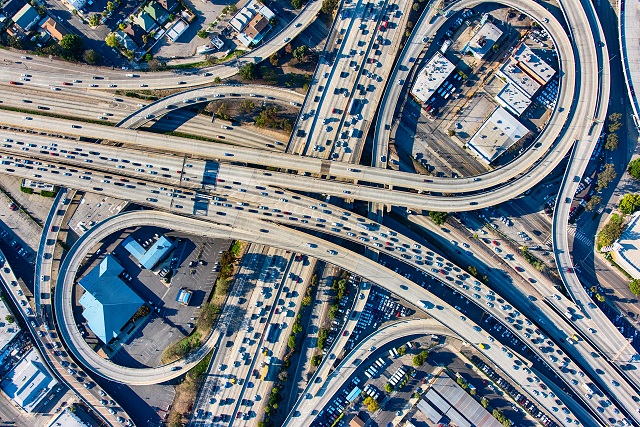
Credit: Art Wager / Getty Images
With the pandemic creating a wave of employees who have decided to work from home part-time, it might be reasonable to assume that traffic will get a lot better. After all, how can there be traffic when a big slice of workers are sitting in their home offices? Not so fast, says Michael Manville, a professor of urban planning at UCLA, who has spent his career studying traffic. Manville argues that our new lifestyles and rhythms won’t fix congested highways, but there is one way to help regulate traffic flow — a solution which will not only reduce our commute times; it will also improve the health of our communities.
Main Takeaways
- We have experienced quieter roadways over the past year, but Manville sees the long-term bringing us right back to where we were pre-pandemic. He gives two explanations for this: first, places with normally congested roads still have high demand for that roadspace — if you decide not to drive, someone else will. The other is that there’s a difference between not commuting and not driving. Working from home might mean you can go to the dentist in the middle of the day, or pick up your dry cleaning, or collect your child from school.
- Reducing traffic has health implications. Cities like L.A. saw a significant reduction in air pollution during the pandemic, when cars were off the roads. And decreases in pollution have quantifiable health impacts. Since neighborhoods that line highways are regularly inundated with pollutants from the nearby traffic, Manville calls this a “less visible cost of congestion.” But it’s still a serious one, since those communities are steeped in the slow-acting poison of air pollution, which is particularly a problem for children and pregnant women.
- Since the pandemic didn’t eradicate our traffic problems, Manville says the number one solution to actually addressing the issue is to price the roads. Treating our roads as a networked utility like heating or electricity naturally regulates the demand for roadspace, making it more expensive to drive at peak hours. This can keep traffic moving at a consistent speed, and the revenue can even be used to keep the system equitable for those who need to drive but might not be able to afford the fees.
More Reading
- Michael Manville has joined us before to talk about traffic reduction. You can catch the conversation here to learn more about pricing our roads.
- Some commuters ditch the car for public transit, but Americans still suffer from “car supremacy.” Check out this article from The Week to learn more about this affliction and the paradox keeping us from choosing buses and trains over our personal vehicles.
- Something former commuters surely don’t miss is the “phantom traffic jam,” a phenomenon where traffic grinds to a halt for no actual reason. This Live Science article has an explanation for why it happens — as well as the way to end it.
- More and more cities at home and abroad are embracing congestion pricing. Find out why in this article in Bloomberg.

